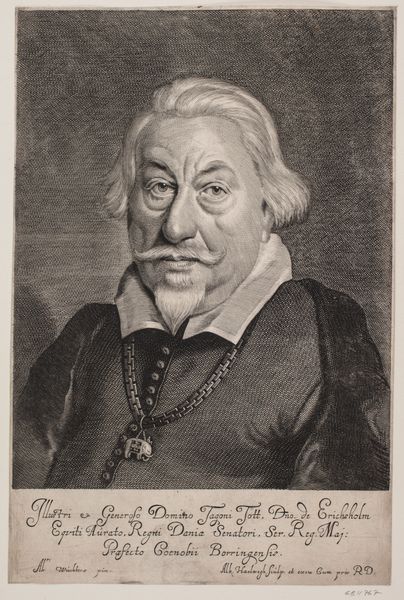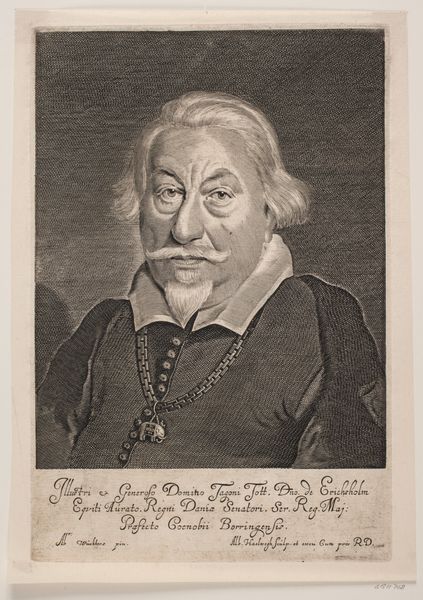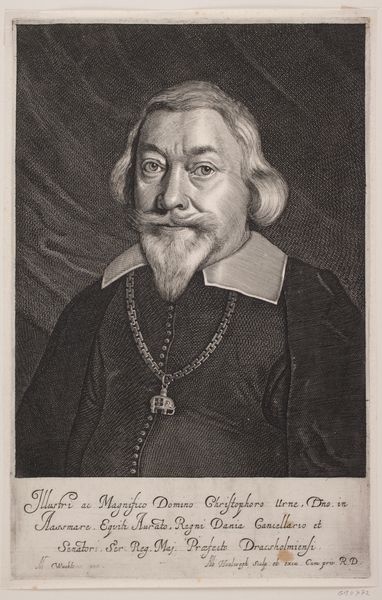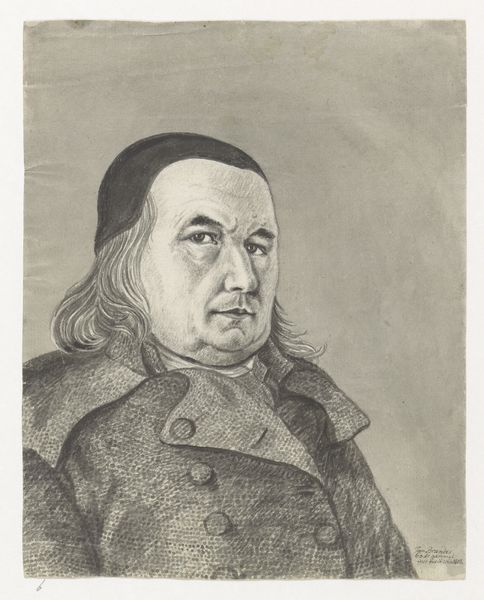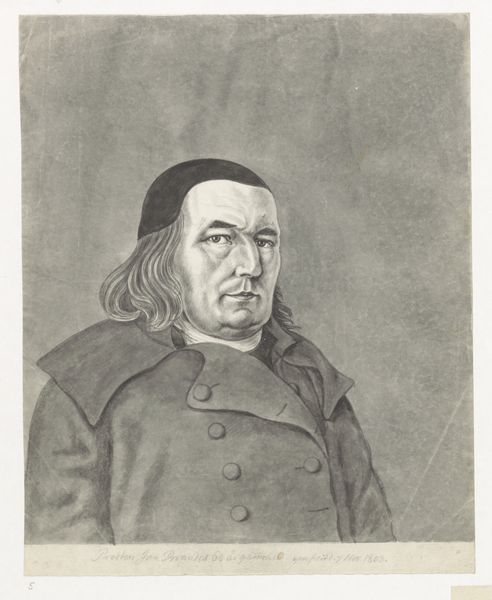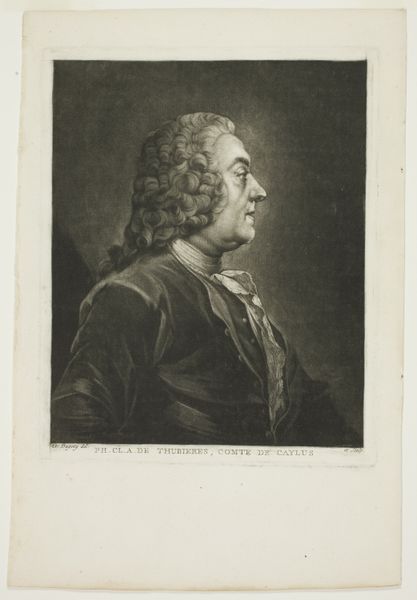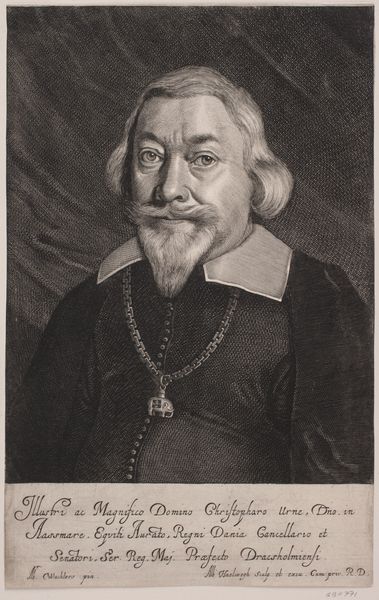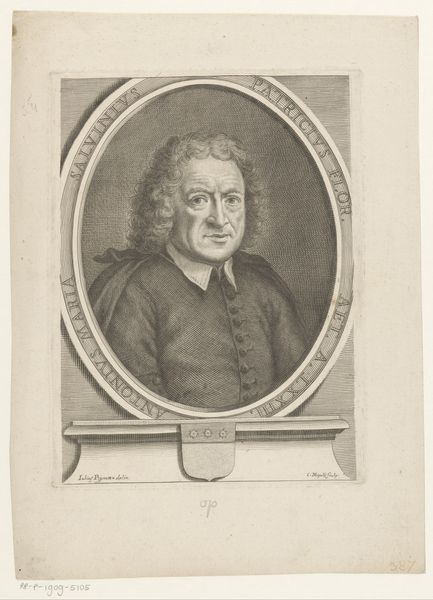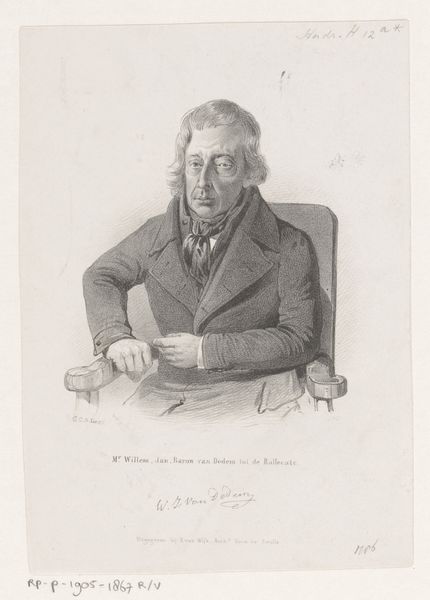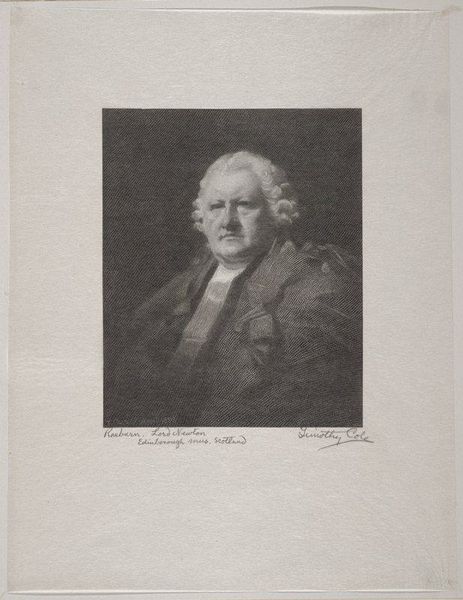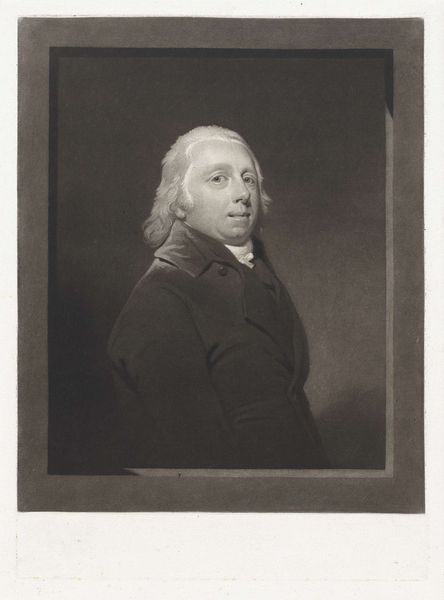
print, engraving
#
portrait
#
baroque
# print
#
history-painting
#
engraving
#
portrait art
Dimensions: 326 mm (height) x 216 mm (width) (plademaal)
Curator: This is "Tage Thott," an engraving made between 1655 and 1659 by Albert Haelwegh. It resides here at the SMK, the National Gallery of Denmark. Editor: The detail in this piece is astonishing. The density of the linework creates a captivating texture and the sharp contrast in the figure’s eyes immediately draws you in. Curator: Precisely. Haelwegh uses hatching and cross-hatching techniques to meticulously render form and shadow, creating a sense of volume and depth that is striking for this era. Editor: I'm interested in how the material realities shape our understanding. The tools, the plates, the printing press... Consider the labour that went into producing multiples of this portrait, and the distribution networks that carried it. Curator: A valid point, but consider also the compositional choices. The subject's gaze, the inscription declaring his noble status, all coalesce to project an aura of power. Note, too, how the chain and pendant symbolize authority within a precise Baroque visual rhetoric. Editor: Sure, but who was commissioning these works, and for what purpose? Was it about establishing lineage, or demonstrating control and wealth, or were these prints a currency within elite circles, establishing material and political networks? Curator: Doubtless. Yet the stark, formal clarity achieved here elevates it beyond mere documentation into an allegorical study of power, rendered with extraordinary precision. There is, for example, the way the contrasting texture is made using a dense collection of precise, sharp cuts and how they emphasize key structural components, such as the play of light on his facial structures. Editor: By appreciating both the visual architecture and the material processes, we’re invited to examine how status was materially constructed and maintained in the 17th Century. Curator: Indeed. It speaks volumes about the interplay between subject, artist, and the very structure of power itself. Editor: A tangible illustration, both literally and figuratively, of status and the act of representing power through skilled labor.
Comments
No comments
Be the first to comment and join the conversation on the ultimate creative platform.
